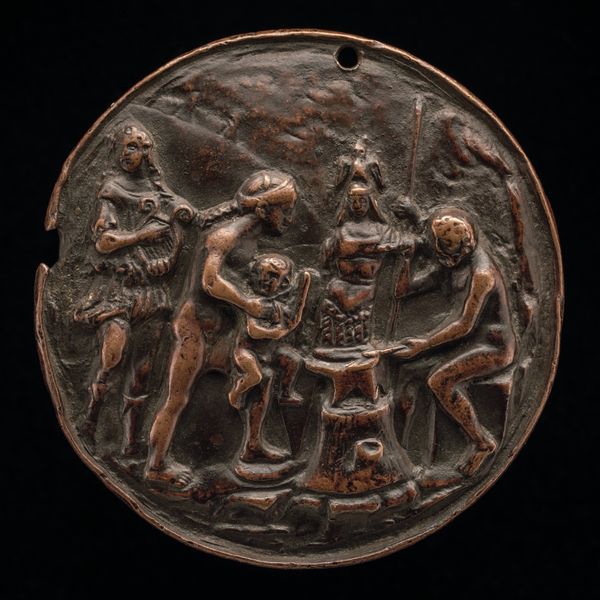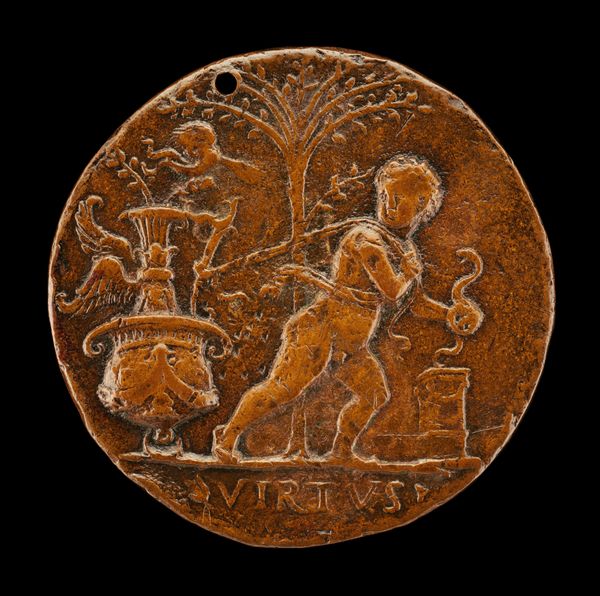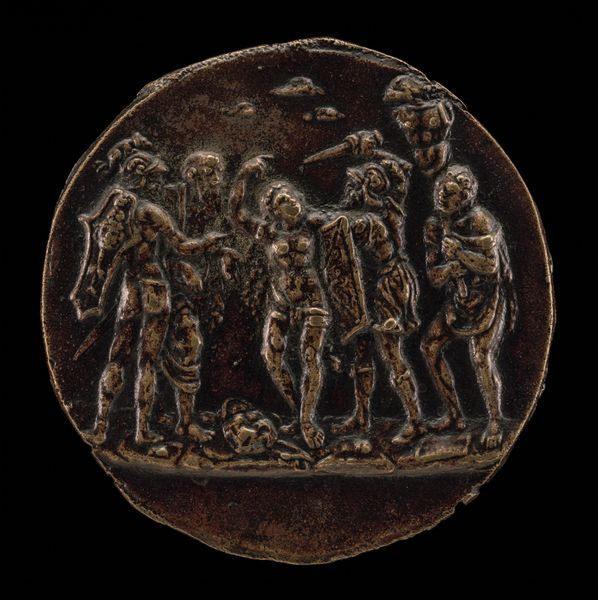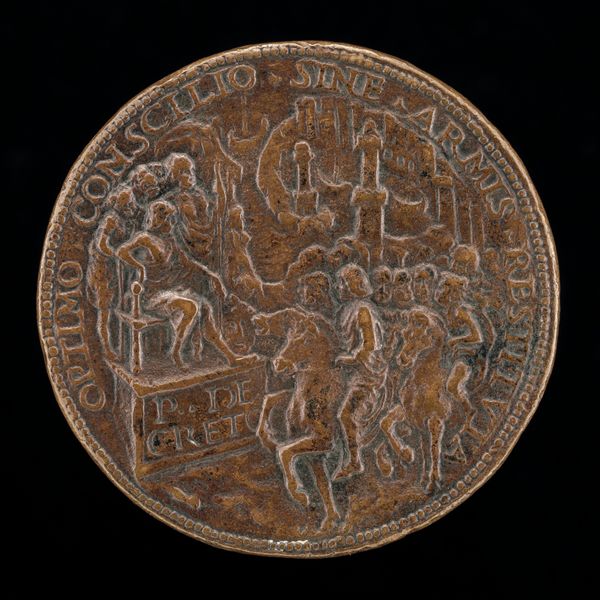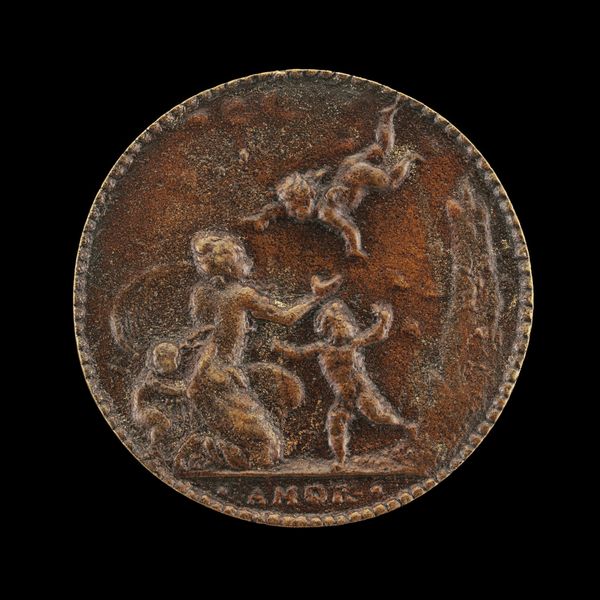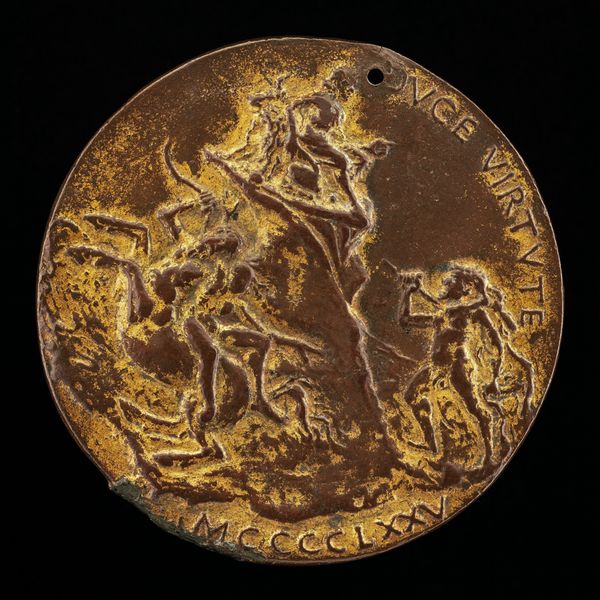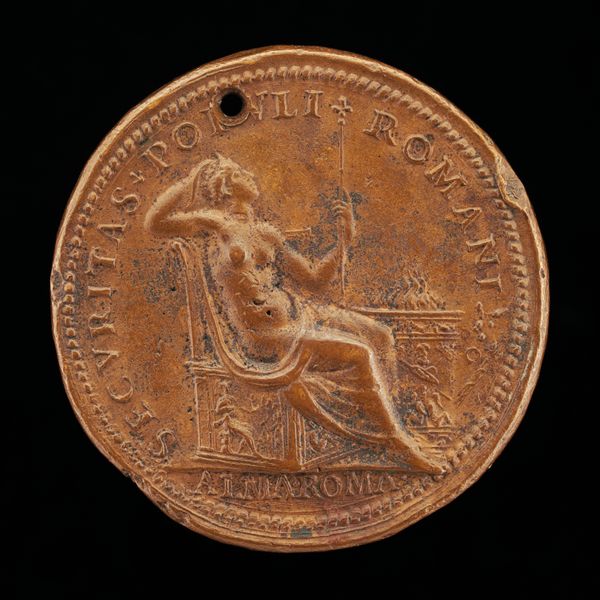![Giampaolo Meli Lupi as a Child Addressing His Father Deifobo II [reverse] by Pier Paolo Galeotti](/_next/image?url=https%3A%2F%2Fd2w8kbdekdi1gv.cloudfront.net%2FeyJidWNrZXQiOiAiYXJ0ZXJhLWltYWdlcy1idWNrZXQiLCAia2V5IjogImFydHdvcmtzL2U5MjZjMGQ1LTMyY2MtNDFkMy1hYTI4LTk1ZjlkNTc5MGYwOC9lOTI2YzBkNS0zMmNjLTQxZDMtYWEyOC05NWY5ZDU3OTBmMDhfZnVsbC5qcGciLCAiZWRpdHMiOiB7InJlc2l6ZSI6IHsid2lkdGgiOiAxOTIwLCAiaGVpZ2h0IjogMTkyMCwgImZpdCI6ICJpbnNpZGUifX19&w=3840&q=75)
Giampaolo Meli Lupi as a Child Addressing His Father Deifobo II [reverse] c. 1554
0:00
0:00
relief, bronze, sculpture
#
natural stone pattern
#
egg art
#
sculpture
#
relief
#
bronze
#
figuration
#
11_renaissance
#
sculpture
#
history-painting
Dimensions: overall (diameter): 5.04 cm (2 in.) gross weight: 36.87 gr (0.081 lb.) axis: 7:00
Copyright: National Gallery of Art: CC0 1.0
This bronze medal was made by Pier Paolo Galeotti in the 16th century. The process of making it would have involved a master model, likely in wax or clay. This original would then have been used to make a mold, into which molten bronze was poured. After cooling, the medal would have been chased, meaning details were refined and finished by hand, using small tools to perfect the image. Consider the amount of labor involved in this process. The casting itself requires expertise, but it's the chasing that really elevates the piece. The artist had to be a skilled sculptor. The material's inherent qualities—its weight, its metallic sheen, its capacity to hold incredibly fine detail—all contribute to the medal's impact. Beyond its aesthetic appeal, this object is also culturally significant. It speaks to the traditions of Renaissance portraiture and the value placed on individual achievement, with the medal serving as a miniature monument. It also underlines the historical connections between art, craft, and the celebration of power.
Comments
No comments
Be the first to comment and join the conversation on the ultimate creative platform.
